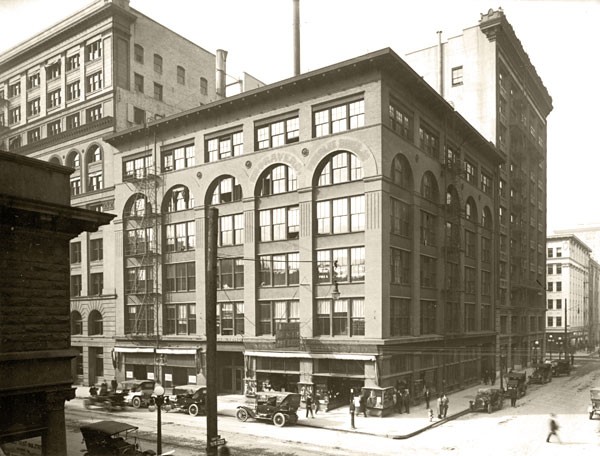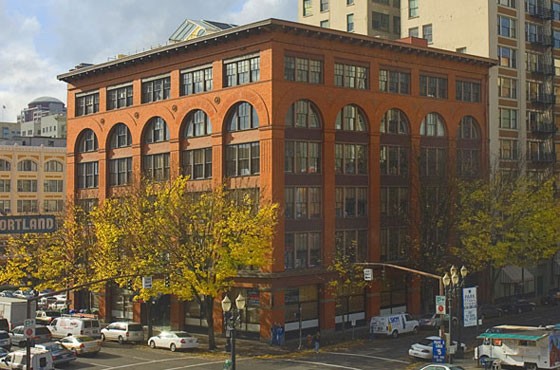Sherlock Building and Church of Scientology
Introduction
Text-to-speech Audio
Images
Sherlock Building close to the time of it's construction (http://visitahc.org/)

Sherlock Building today (http://visitahc.org/)

Backstory and Context
Text-to-speech Audio
The Sherlock building was initially constructed by the Forbes & Breeden furniture firm – the largest furniture retailers that existed west of the Mississippi River – together with the Northwest Loan & Trust Company. Construction began in 1893, just before the so-called Panic of that year decimated the nation’s economy. Many railroads went bankrupt, more than fifteen thousand businesses were forced to close, and over five hundred banks went bust, causing the stock market to crash. Approximately three million people lost their jobs as unemployment shrank to twenty percent. The Panic resulted in the closure of four major banks in Portland. Construction halted, and much like approximately half of the other properties in the city the plot and semi-finished building was sold. Although the name “Forbes & Breeden” is still visible above the entrance, they never in fact made use of it.
An Irish immigrant, William Sherlock, acquired the building when it was sold in 1893. Sherlock had arrived in the USA in the 1840s, settling first in Illinois. Together with his family he moved to Swan Island, Portland, in 1850. There he occupied himself with cattle breeding, and eventually opened a successful uniform-manufacturing business in the city. With his success, Sherlock began to purchase properties around the city that had been made cheap by the economic depression. The most famous of these was the thirty eight block industrial and residential district near Guild’s Lake, known as “Sherlock’s Addition.”
Sherlock funded the completion of the semi-finished building, and gave it the name by which it is known today. The six-story structure was built in the Sullivanesque style by an anonymous architect. Although it has been associated with the work of the famed Portland architect Louis Sullivan, more recent comparative studies indicate that it might be the work of Isaac Hodgson Jr. Born in Omaha, Nebraska, Hogson was in Portland at the time of the Panic, and the Sherlock building displays many similarities with other homes he designed in the Queen Anne, Colonial Revival, and Richardsonian Romanesque styles around the city. The timber and masonry structure follows a mill construction form of five twenty square foot bays. Massive brick piers support the upper stories, set upon solid foundations of basalt. It has a flat roof, with a cornice made of sheet metal decorated with a wave scroll design. Although plain today, the frieze that encircles the building was once used to advertise the stores located below.
The interior floor plan remains quite unchanged from the time of William Sherlock, though the stores themselves were remodelled in the 1930s. Entrance is via an enormous twenty foot wide recessed glass and oak doorway, which leads into a central gallery that extends across the centre of the building. Visitors would browse through a number of stores that flanked this gallery, which were handsomely made with large glass windows and central recessed glass and wood doors. The upper stories were occupied by the services department, restrooms, and office spaces. These and the basement were all accessed by elevators from the main gallery, as well as a freight elevator.
The building was owned by the Sherlock family for seventy five years between 1869 and 1944. The interior remained in a fine state of preservation for much of the later twentieth and early twenty first centuries, during which it was used by a variety of restaurants and businesses – including a blueprint manufacturer. Of particular note were the original floor made of one-inch wide green and white ceramic tiles laid in a fret pattern, formidable visible timber beams in the upper floors, the original fire safety system, and small terra cotta medallions depicting a “Sullivan” design set into the arch spandrels of the fifth floor. The Church of Scientology purchased it in 2010, after their first Portland headquarters – the Stevens Building on 812 SW Washington Street – became too small for their chapter. They have carried out extensive renovations of the interior.
